Restoration Work Underway at Palace of Gold in New Vrindaban
Restoration Work Underway at Palace of Gold in New Vrindaban.
by Madhava Smullen
Today, as they did four decades ago, devotees at ISKCON New Vrindaban are embarking on a labor of love.
They’re undertaking the restoration of the Palace of Gold, home to Srila Prabhupada, ISKCON’s Founder-Acarya, to continue spreading his glories to the world.
Devotees began building the Palace with their own hands back in 1973 as a simple residence for Srila Prabhupada, who enjoyed the peace and spiritual atmosphere of New Vrindaban during his visits.
But as construction progressed, their plans became more and more ambitious. Srila Prabhupada was frequently expressing his desire to retire from the active management of his growing movement to focus on his translation work, and he often cited New Vrindaban as the place to do this. So his disciples wanted to create a home truly befitting him there.
Working with no pay and very little experience, they trained themselves in traditional artisanal skills. Designer Bhagavatananda said he didn’t have the slightest idea whether or not he was breaking architectural rules – he and the other devotees just worked from inspiration. The results, straight from their hearts, were stunning, as workers spent hours painstakingly handcrafting each piece.
Throughout, Srila Prabhupada’s love and encouragement kept them going.
“Regarding New Vrindaban I was very happy when I was there,” he wrote to Kirtanananda on October 5th, 1974. “Not only myself but all devotees and GBC members all enjoyed the atmosphere of New Vrindaban, especially the cow protection scheme. May Krishna give more facilities to advance the cause of New Vrindaban, and I am expecting very soon to go there and live in my proposed palace at least for some time.”
But Srila Prabhupada would never stay at his Palace while he was physically alive. He passed away in 1977 before it was completed. Yet this only fueled his disciples’ determination to construct a singularly beautiful monument to their beloved guru, his astounding achievements and the gifts he had given the world.
After all, the guru never dies but is always present in his instructions – so Srila Prabhupada still resides in his Palace in spirit as long as he is remembered and honored there by his followers.
In 1979, Srila Prabhupada’s Palace of Gold officially opened its gates to the public. Thousands of tourists, as well as one thousand devotees from all over the world, flooded in to see Prabhupada at his New Vrindaban home.
One of them was Gopisa Das, who arrived at New Vrindaban to help finish the Palace’s wrought iron gates and cook for the festival. Now, thirty-four years later, he is ISKCON New Vrindaban’s Director of Facilities and also the acting project manager for the Palace restoration.
“I was absolutely overwhelmed when I first saw the Palace,” he says. “It was so beautiful. But what was most exciting to me was the spirit of cooperation, to see so many devotees working together for the pleasure of Srila Prabhupada.”
With its gold-leafed domes rising above the emerald West Virginia hills, Prabhupada’s Palace is an impressive feat of architecture. Visitors can walk through the award-winning Palace Rose Garden and up the steps to the Palace, pausing before they enter to marvel at the picturesque views from one of the four corner chattras, or domed lookouts.
Inside, sunlight pours in through thirty-one stained glass windows, made from over 1,500 pieces. The walls and floor are made from fifty-two kinds of marble, each piece cut, polished and set with loving care.
And the rooms, originally designed for Prabhupada’s personal use, include a bedroom, a bathroom, and a study where a life-sized replica of Prabhupada leans over his desk, translating his books. For devotees and visitors, this is a place where they can sit, spend time with him and feel his presence as he executes his most cherished service to his own spiritual master.
Finally, in the temple room, a murti form of Srila Prabhupada sits on an ornate gold-leaf throne, beneath a domed ceiling made from over 4,000 pieces of crystal.
With all this, it’s no surprise that the Palace has long been one of West Virginia’s biggest tourist attractions, dubbed “The Taj Mahal of the West” by the New York Times and drawing up to 60,000 visitors a year at its peak in the 1980s.
Over the years, that number has declined. But the Palace managers, led by Tripada Vibhuti Das, continue to work closely with the Marshall County Tourist Board, and still receive twenty to twenty-five thousand tourists annually. Media coverage still abounds, with the July 2012 edition of CNN Travel selecting The Palace of Gold as one of the eight religious wonders to see in the United States. And guests on all the Palace tours learn about Srila Prabhupada and his amazing efforts in bringing Krishna consciousness to the Western World.
“Through the tour people really appreciate Srila Prabhupada, as well as the love that went into making the Palace for him,” Gopisa says.
Of course, for devotees, Prabhupada’s Palace is much more than a tourist attraction. It is a holy place of pilgrimage, one of only three samadhis, or official memorials, to Srila Prabhupada in the world, along with his Samadhi Mandir in Vrindavan, India, and Pushpa Samadhi in Mayapur.
“And of course, being the only official memorial dedicated to Srila Prabhupada here in the West,” Gopisa says, “It does provide a focal point for devotees to offer their respects and see him in this very beautiful rural setting, which he very much appreciated.”
A dedicated crew of devotees still steadily worship Srila Prabhupada at his Palace, cooking offerings at Sri-Sri RadhaVrindabanchandra’s temple and taking them up to him. Some visit for Mangal arati early in the morning, or go to hear senior devotees speak about Srila Prabhupada in the early days of ISKCON. And of course, Prabhupada’s appearance day and disappearance day are observed at the Palace.
But still, the Palace has not been celebrated amongst ISKCON devotees as much as it deserves in recent years, partly due to the fact that New Vrindaban temporarily parted ways with ISKCON from 1988 to 1998. At the time, many devotees felt as if the heart of Srila Prabhupada’s society had been ripped out, and in some ways New Vrindaban and ISKCON North America have never been quite the same since.
Another reason for the current lower awareness of Prabhupada’s Palace is the visible disrepair as a result of novice construction methods, signs of which began to show as early as the late 1980s. Today, chunks are missing from the outer wall, wrought iron pieces are rusting, the chattras and other cast concrete pieces are crumbling, and the granite on the steps leading up to the Palace is shifting from faulty concrete underneath.
Over the years, in the same loving spirit that infused the original builders, devotees like Tripada Vibhuti have patched up and painted what they could.
But lack of funds prevented a full restoration, until mid 2009, when an inspired Ramesvara Das joined forces with GBC Malati Dasi and other senior disciples to form the Palace Restoration Committee.
The group researched several architectural firms and selected Kayafas Architects of Wheeling, West Virginia, a local firm with an excellent reputation for historic preservation, to assess what needed to be repaired.
Fortunately, engineers concluded that the core structure of the Palace was sturdy and showed no indications of stresses or cracking.
Meanwhile, plans were put in place to repair the outer wall, the portico railing, the steps and the chattras as quickly as funding allows — the project is expected to cost around $1 million.
Some of these elements will be completed by the 50th anniversary of ISKCON’s founding in 2016, while others will be ready by the 50th anniversary of New Vrindaban in 2018.
Although the project will employ professional consultants, much of the actual construction work will once again be done by devotees, in keeping with the legacy of the Palace.
“We’re older and smarter now,” Gopisa says, grinning. “And we have more training and information. When the Palace was first built, there was a real push to get it done as quickly as possible, and shortcuts were taken. We won’t make those same mistakes again. The materials we use will be tested to make sure that they’re of the proper standard and quality before they’re installed.”
Beyond 2018 is a larger, $5 to $7 million plan for the Palace’s expansion, which will take at least ten years to complete.
The final vision will see visitors pull into a larger parking lot, and first enter a welcome center and gift shop. They’ll then be guided through a museum about Srila Prabhupada where they will see different artifacts connected to the ISKCON founder.
Next, they’ll view a multimedia presentation on Srila Prabhupada’s life, and on the history of his Palace of Gold. Finally, they’ll take a tour through the Palace itself, culminating in a visit with Srila Prabhupada’s murti in his temple room.
With Gopisa Das already fully occupied as facilities manager, and Tripada Das tasked with the day-to-day running of the Palace, ISKCON New Vrindaban is currently searching for a dedicated project manager to realize this grand vision.
“We’re hoping that there are devotee professionals out there who would consider taking this up as their life’s work,” Gopisa says. “The applicant would require a background in many different fields of construction and would have to have the experience necessary to oversee a large multi-million dollar, multi-year restoration project such as this.”
Meanwhile other devotees can help by donating, or by visiting Srila Prabhupada at his Palace and doing a few days or weeks of service there.
This support is key, for many believe that restoring Srila Prabhupada’s Palace will symbolically show that New Vrindaban is once again rightly situated, and will raise morale throughout ISKCON North America.
A restored Palace, of course, will also create new interest amongst the public in Srila Prabhupada’s unique contribution.
“Without Srila Prabhupada, we would not have Krishna consciousness in the Western World,” Gopisa says. “His significance and contribution cannot be overstated. So having this focal point in the West where people can come and learn about him is very important.”
“In the future, we hope that the Palace will be restored beyond its former glory,” Gopisa concludes, “And that many thousands more will come and truly appreciate Srila Prabhupada, and the devotion that went into building this Palace for him.”
To donate towards the restoration project, please visit palaceofgold.com.
To apply for the position of Palace Project Manager, please contact Jaya Krishna Das at jaya.krsna.sns@gmail.com.
New Vrindaban Daily darsan @ January 12, 2014.
Please click here for all photos
If you desire to easily get vast wealth, a beautiful wife, good children, a palatial home and the other opulences that don’t come in this world without a struggle, and if you desire krishna-bhakti, which carries liberation in the palm of her hand, then simply reside in the spiritual realm named Vrindavana.
[Source : Nectarean Glories of Sri Vrindavana-dhama by Srila Prabodhananda Sarasvati Thakura, 1-34 Translation ]
Srila Prabhupada on New Vrindaban: Seven Temples on Seven Hills – July 1968
Srila Prabhupada on New Vrindaban: Seven Temples on Seven Hills – July 1968.
An Excerpt from The Hare Krishna Explosion.
By Hayagriva dasa
The Montreal temple is located in a large, grey Gothic building near McGill University. The ground floor is occupied by a commercial printing company. The upstairs bowling alley has been converted into a kirtan hall and living area for new devotees—Shivananda, Jayapataka, Hansadutta, Vaikunthanath. Now it is crowded. There has been a flurry of activity since Prabhupada’s arrival.
Kirtanananda and I visit Prabhupada in his nearby apartment. As always, it seems, Prabhupada is seated behind his footlocker, the familiar aromas of gardenias, incense and sandalwood about him. Goursundar and Govinda dasi scurry about, fretting that too many people are disturbing him. We pay our obeisances, and I offer Prabhupada yellow roses, which Govinda dasi arranges in vases.
“So how have you come?” Prabhupada asks.
“By plane from New York,” I say.
“Ah, very good. And in New York they are doing nicely?”
“Yes, Srila Prabhupada. Very nicely.”
“And what about New Vrindaban? That is doing nicely?”
“The owner has finally agreed on a long term lease,” I say, “but he wants the timber.”
“Oh, that cannot be. We must have all rights.”
“The coal rights were sold sixty-five years ago,” Kirtanananda says. “This is the case with all the properties in that area.”
“This means that if the government develops the coal industry, we may be asked to vacate,” Prabhupada says, concerned. “And no law can stop it.”
We admit that this is a point to consider.
“Yes,” he continues, “even if the government does not interfere, if some big industry moves into our vicinity, our New Vrindaban will fade away.”
I suddenly envision the little farmhouse and willow tree enveloped in a haze of smoke, the pastures invaded by steel drills abusing Mother Earth, giant smokestacks….
“New Vrindaban must be free from industrial contamination,” he says. “Industries like mining will ruin everything. Consider well the land’s future.”
“Most of the coal has already been mined through underground tunnels,” Kirtanananda says.
“Another important point,” Prabhupada goes on. “What happens to the property after ninety-nine years?”
I don’t know,” I say, not having really thought of this. “We won’t be around then.”
“But the Society will,” he says. “There must be an agreement that at the end of the lease, the property will go to us.”
This had been our oversight. Of course it must go to the Society! Great temples will be rising from the blackberries and pokeweed!
“We’ll try to get Foster to agree,” I say.
We then describe the property. As soon as Prabhupada understands where the main road is, he asks, “How do you get up to the farmhouse?”
“Well, that’s the big problem,” I admit. “It’s not really what you’d call easily accessible. But you could drive a jeep or horse and wagon up it. Otherwise, it’s a two mile walk.”
Prabhupada reflects on this a moment.
“Hm. Horse and buggy would be better,” he says at length. “You should avoid machines and become as self-sufficient as possible. And horses are pleasing to look at. They are the most beautiful of animals.”
Kirtanananda presents a quart of blackberry chutney and one of raspberry jam.
“Ah, very fresh,” Prabhupada says, sampling them. Then, serious, thinking again of New Vrindaban: “Yes, in New Vrindaban everything will be Krishna conscious because everything will be for Krishna. So building houses, tending cows, and working fields will also be bhakti-yoga. People mustn’t go there just to retire. They must be engaged. In your country, old people like to keep dogs and smoke pipes when they retire. Or they play… what do you call—?”
“Shuffleboard,” I say, thinking of the old men in Golden Gate Park. “And checkers.”
“Yes. That is what we want to avoid. We must always engage in Krishna’s service so maya cannot enter.”
“There’s no end to engagement, Prabhupada,” Kirtanananda assures him.
I think of breaking my back removing rocks from beneath the waterfalls. I think of all the wildflowers left unpicked.
“The hills and temples must all be named,” Prabhupada says. “On seven hills we will build seven main temples, as in the original Vrindaban—Govindaji, Gopinatha, Madana-Mohana, Shyamasundara, Radha-Ramana, Radha-Damodar, Gokulananda….
Sitting before him, we begin to see spiraling gold-domed temples in the West Virginia hills. Vaporous fantasies, perhaps, but so strong is Prabhupada’s confidence that for us his New Vrindaban temples seem as tangible as his tin footlocker.
“Of course, Kirtanananda, you have seen Vrindaban,” Prabhupada continues. “Remember the atmosphere? There are temples everywhere, some five thousand, it is said. That is a far distant scheme.”
A far distant scheme. I wonder if we can repair the farmhouse roof before the autumn rains.
“But now let us build at least seven temples,” he says, his eyes wide with anticipation. “The hills you can name Govardhan. There must be pastures for the cows, and ghats for bathing, like Kesi-ghat. Oh, I will give you so many names! And Kirtanananda, you can attract the neighbors with your delicious prasadam.”
Talking leisurely in the cool Montreal afternoon, Prabhupada describes New Vrindaban so graphically that we envision great lines of tourists waiting for guides to lead them through marble temples and palaces.
Every moment, Prabhupada builds and tosses out schemes to occupy thousands of devotees. On his footlocker is a lamp, some papers, and a few books. Bhagavad-gita is always within reach. I see him sitting thus eternally, looking up from the holy scriptures through his spectacles, creating whole cultures and civilizations centered about Krishna.
In the evening, Govinda dasi serves spiced puffed rice.
Prabhupada garlands us. We drink sweet yogurt, and he comments on Janardhan’s plans for a Back To Godhead in French for Canada. He is jolly, and when we pay obeisances before leaving, he says, “Yes, try for this New Vrindaban with heart and soul. And rest assured it will develop.”
For four days, Prabhupada waters the New Vrindaban devotional creeper. It is indeed a young, tender plant requiring special treatment.
On the fifth day, carrying plans, schemes, visions, and lofty aspirations, we fly back to New York, accompanied by universal royalty, the Jagannatha Deities, purchased from a Montreal import house.
New Vrindaban Daily darsan @ January 11, 2014
Please click here for all photos
He who gives up the company of ordinary people, keeps no servants or followers, agitated with a desire to serve Sri Sri Radha-Krishna, constantly sheds tears, his hands placed on his cheeks and lives in Vrindavana, is the most fortunate of all persons.
[Source : Nectarean Glories of Sri Vrindavana-dhama by Srila Prabodhananda Sarasvati Thakura, 1-33 Translation ]
Remembering New Vrindaban’s Samba 1949 – circa 1991
Recently there was a picture of Samba on the Brijabasi Spirit Throwback Thursday. Naturally it reminded me of him. What he will be best remembered for is that he was a trucker who hauled in much of the materials that manifest as what most devotees would now recognize as New Vrindaban.
He took initiation from Srila Prabhupada in 1972 and helped build the Palace. All that marble you see at the Palace was hauled in and Samba made frequent trips to New York and other places to pick it up.
He was especially active in the 1980s when the lodge, Sri Sri Radha Vrindaban Candra temple and all the associated building were constructed. We had our own cement mixer for the floors and curbs and a paving brick factory where all the pavers used in the parking lot were made. All that material was hauled in as well as the gravel substrata under the roads. Also a lot of the construction materials that were used to build the structures.
Samba was so dedicated he would be at the gravel place when it opened in the morning. He would haul gravel all day until it closed. He would dump the gravel on a lot we purchased at Rte 88 and 250. Then when the gravel place would close he would reload the materials onto his truck and haul it the rest of the way into New Vrindaban because he could get more done in a day that way.
When the lake by the temple, then called Kaliya Ghat, was being built he was involved. A large hole was excavatedIn order for a lake to hold water it needs a clay liner and the clay on site wasn’t suitable so he was trucking it in. He would dump it and the man (or in this case, kid, our current ECOV director Chaitanya “Chaits” Mangala then age 14 ) on a dozer would smooth it out to make the liner.
BTW other members of the crew were Varsana Maharajah overseeing, Pippalada, grader operator, Murti, truck driver, Kaliya Krishna, trucker, Sarva Saksi back hoe and Samba, son of Hayagriva, also just a kid at age 12, dozer.
They would run in shifts around the clock and a leader at the time said he couldn’t fall asleep unless he heard the equipment running.
Some of Samba’s ashes were spread in the ghat so the next time you watch a Swan Boat Ceremony, remember Samba.
Samba was also a devotee of Tulasi and spent a lot of time caring for Her.
After Srila Prabhupada left the planet and Kirtanananda took over Samba left for a few years. He got cancer and moved back to New Vrindaban to leave his body. He was set up in a room in what is the guest quarters now of the temple.
While there he was chanting furiously, so intently that a prominent leader told him that because he had done so much service and was rightly situated in the temple that he didn’t need to worry so much about chanting so hard. Samba waited until the leader left the room then went right back to chanting furiously.
At the end there was a sannyasi who was visiting and standing next to his bed holding his danda. With his last breath Samba reached out, grabbed the danda , and left his body. Those of us at the time who were hard core householders appreciated that although it is proscribed that at some time we take up the sannyasa life of celibacy, traveling and preaching, Samba only had to endure that for the shortest possible time, one breath, as we figured grabbing the danda was taking sannyasa. It was another thing to admire him for.
New Vrindaban Daily darsan @ January 10, 2014.
Please click here for all photos
Don’t do anything! Don’t say anything! Forget everything you’ve seen! Remember the fair and dark divine couple that pains Kamadeva, flee the common people and go to transcendental Vrindavana!
[Source : Nectarean Glories of Sri Vrindavana-dhama by Srila Prabodhananda Sarasvati Thakura, 1-32 Translation ]
Manorama dasa leading New Vrindaban’s 24 Hour Kirtan – June 15th, 2013
Video of Manorama dasa leading New Vrindaban’s 24 Hour Kirtan – June 15th, 2013.
New Vrindaban Daily darsan @ January 9, 2014.
Please click here for all photos
Free from the witch of female companionship, uproot all desires for material enjoyment, accept whatever destiny provides for your bodily maintenance, and reside in Sri Vrindavana.
[Source : Nectarean Glories of Sri Vrindavana-dhama by Srila Prabodhananda Sarasvati Thakura, 1-31 Translation ]
New Vrindaban’s Transcendental “Throwback Thursday” – 01/09/14
New Vrindaban’s Transcendental “Throwback Thursday” – 01/09/14.
Each week we highlight an earlier era of ISKCON New Vrindaban.
This week’s challenge: Name the three devotees who can be clearly identified in the photo.
Extra credit: With a little patience and determination, you might be able to ID a few more.
Post your best guesses on the “who, what, when & where” in the comment section at the New Vrindaban Facebook Page.
Technical stuff: We share the photo Thursday and confirm known details Sunday.
Let’s have a bit of fun and see who knows their New Vrindaban history!
New vrindaban daily Darsan @ January 8, 2014.
Please click here for all photos
You may experience either happiness or distress. You may know fame or infamy. The lowest persons may insult you, or the saintly devotees may praise you. You may know poverty or great wealth. You may obtain all valuable things, or you may not obtain anything. Whatever position your past pious or impious deeds may place you in, just make Vrindavana your life and soul.
[Source : Nectarean Glories of Sri Vrindavana-dhama by Srila Prabodhananda Sarasvati Thakura, 1-30 Translation ]
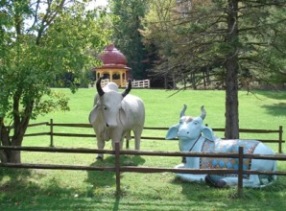
Welcome to Brijabasi Spirit
Thank you for taking the time to visit the New Vrindaban community blog. Think of visiting our blog as making a virtual pilgrimage.
Hare Krishna Hare KrishnaKrishna Krishna Hare Hare
Hare Rama Hare Rama
Rama Rama Hare Hare
"May cows stay in front of me; may cows stay behind me; may cows stay on both sides of me. May I always reside in the midst of cows."
Hari Bhakti-vilas 16.252
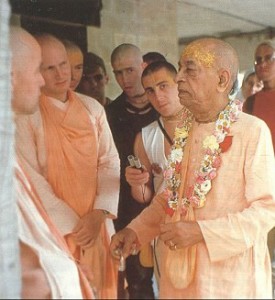
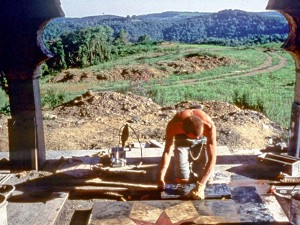
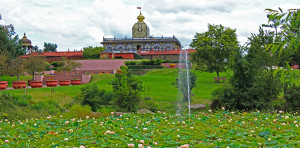
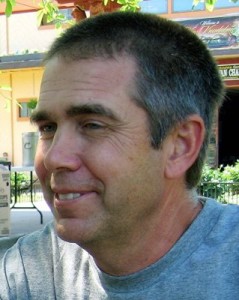
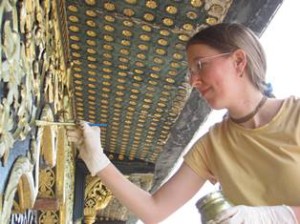
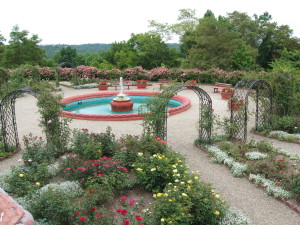
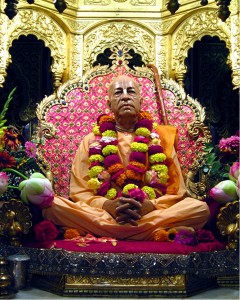


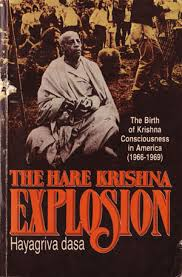
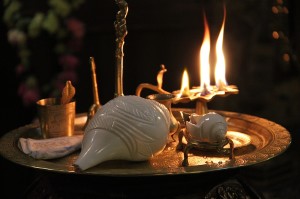


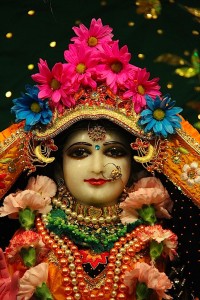
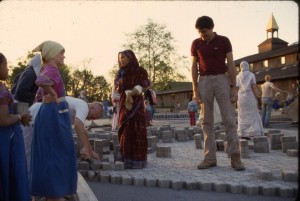





Recent Comments